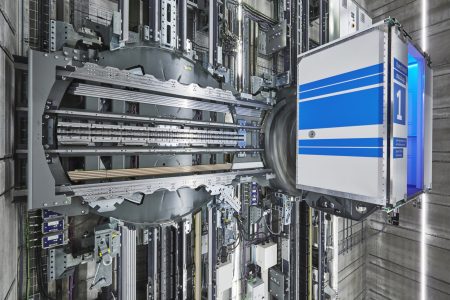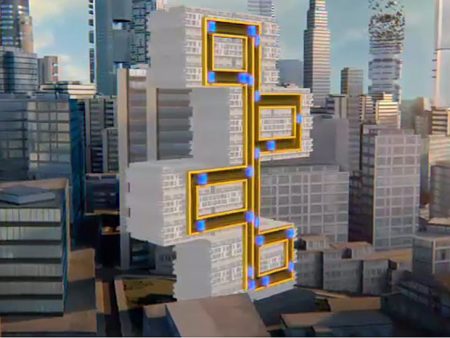June 29, 2017 – Elevators have been going up and down pretty much the same way since Elisha Graves Otis first came up with the technology in the 1850s. But ThyssenKrupp, the German engineering firm, is about to add a whole new dimension to elevators. At its testing facility, a tower in Rottweil, Germany, the Multi, a new elevator, no longer uses a cable and weight system. Instead, its elevator cars run on rails and use magnetic fields. No longer confined to just moving up and down, now elevators can move sideways.

Get on one of these new elevators and it plans the route to your destination when you tell it where you need to go. It goes up, moves to the left or the right and arrives. Today most engineers will tell you that the limit of vertical height in buildings has more to do with its elevators than any other factor. Known in the industry as the “rope,” conventional elevators are defined by the length of the cable that suspends them. That distance amounts to about 500 meters (1,640 feet). And a single elevator with a conventional “rope” carrying 24 passengers, will consume 130,000 Kilowatt hours of energy per year and weigh up to 27,000 kilograms (almost 60,000 pounds).
The Multi is not constrained by the “rope.” It uses linear motors, rails, and magnets, and a fraction of the energy needed by conventional elevator systems. When an elevator cab arrives at a floor the rails can rotate to move sideways and then rotate back to the vertical. The first commercial building to have a Multi installed will be the East Side Tower in Berlin developed by OVG Real Estate.
The biggest advantage of the technology for future architects is the flexibility the Multi brings to building design. The constraints of a vertical shaft are no longer there. Buildings can be taller and geometrically more imaginative in design than ever.

The biggest drawback, however, is the cost. A building that installs a Multi elevator system will spend as much as five times more than the elevator technology that is still based on Otis’ original invention.









